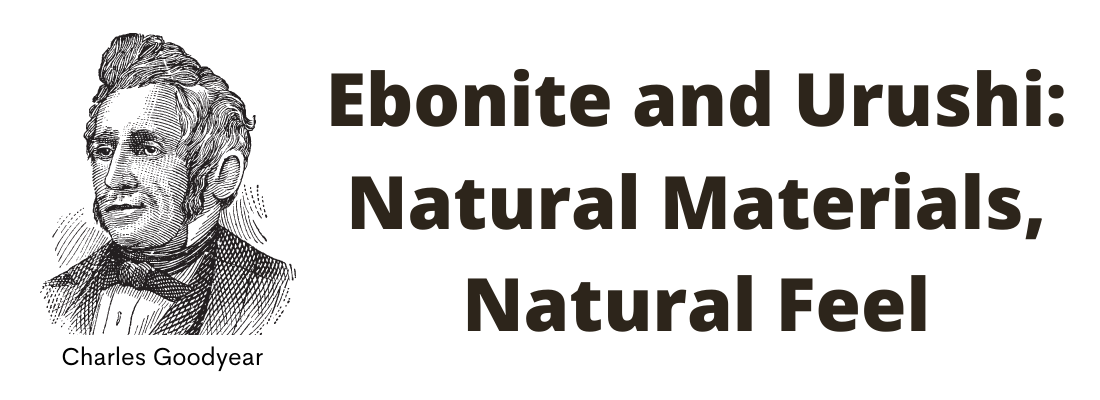You may have heard of ebonite – it’s a tough, dark material that resembles ebony wood. But what is it, and why make pens out of it?
First, it’s helpful to have an understanding of the material that inspired the name. “Ebony” is the collective name for several species of endangered hardwoods. Ebony can be polished to a mirror finish, making it valuable as an ornamental wood. The history of ebony goes back to Ancient Egyptian times, as carved pieces of ebony have been found in their tombs.

In modern times, the use of ebony is nearly unheard of. Its trees are protected, and in most countries, they are illegal to harvest.
But there’s another natural material that looks a lot like it: ebonite.
History
“Ebonite” is the brand name for hard rubber. Just like we say “band aid” and “chapstick” as generic nouns, these are actually trademarked words. And ‘ebonite’ became the word we use for hard rubber.
The history of ebonite goes back over 170 years. Sources differ on the details, but agree that the Goodyear brothers were instrumental in creating the first ebonite in the mid-1800’s.
Ebonite is made from latex, the sap of the rubber tree. Like the urushi collection practice, latex is gathered through a process of tapping into trees. The latex is then refined into rubber. To create ebonite, the rubber must be subjected to vulcanization. This process combines the rubber with sulfur and other materials to create the hard, durable substance known as ebonite.

These days, ebonite is used in woodwind and tobacco pipe mouthpieces, bowling balls, hockey pucks, and of course, fountain pens.
Why ebonite pens?
Ebonite has an added warmth and vitality that acrylic pen bodies don’t have. Because it’s a natural substance, you might feel like it is alive in your hand. Danitrio pens feel doubly so, because the pen bodies are enveloped in another natural product, urushi. You won’t get this unique feel from an acrylic or metal pen.
Ebonite has another desirable quality – durability. It’s chemical resistant and can withstand the high pH of ink. This becomes important in eyedropper pens (which some Danitrio pens are). The ink can touch the inside of the pen barrel and not become stained or damaged.
Danitrio pens
You might see some vintage fountain pens that are made of this material. They were common in the early 20th century. But these days, they’re fairly rare. Only a handful of pen manufacturers use ebonite.
All Danitrio urushi pens are made with ebonite pen bodies. So rest assured that whatever pen you see on UrushiPen.com, it has an ebonite pen body.
Visit our website to see all our beautiful pens. Want to get in touch? Contact us!

